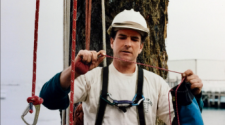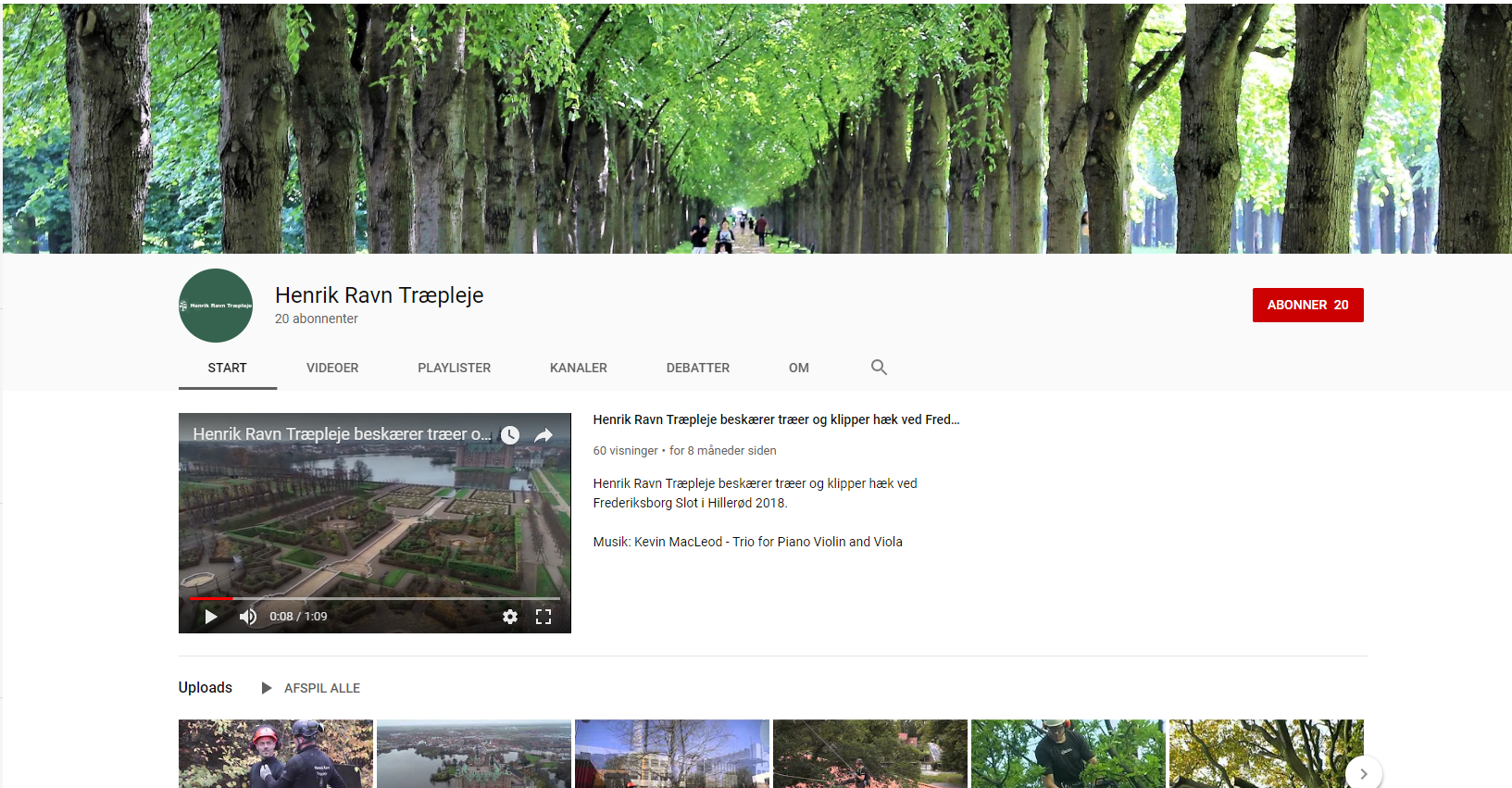In my nearly 30 years as an arborist, I have seen numerous changes in our industry. Our tools are constantly improving for everything, from climbing and rigging to machines like chippers, grapple loaders and all the various types of cranes we can use. These tools can make our work safer and more efficient. Another “tool” that has greatly improved in our industry is training.
At the beginning of my career, there was very little training available; one simply learned from his or her co-workers, eventually trained their newest co-workers and so on. Now training is available on many different platforms, and that is helping improve our industry.
I have participated in and performed many training events over the years, on topics such as climbing, rigging, aerial rescue, crane use and more. These training sessions have helped increase my skills as well as those of others. While performing training at our organization as well as at other organizations, there is usually one piece of the puzzle that is missing. With so many improvements in equipment, techniques and training, one would think that our injuries and incidents would be declining; the truth is, they are not. So what is missing? Potentially, effective leadership.
In reviewing our training documents from the past 20 years, I see many programs based on performing a task that requires one or more new skills. We have a countless number of those and that’s a good thing. How many training programs do we have on leadership? Sadly, we have had three, and two of them were performed by our staff. If this is the case for a company in its 45th year of operation, such as our company is, then I’m assuming we are not alone.
What is leadership
Leadership. What is it? There are thousands of definitions of leadership. I prefer this one, which I’ve honed from others over the years: The ability of an individual to influence, meaning to get someone to understand and buy into, your vision. To motivate, meaning simply to get them engaged and interested. To enable, meaning to give them the tools and training they need. All of these contribute to a common goal.”
There is a theory that has been around for many years known as the Five Levels of Leadership (from The 5 Levels of Leadership: Proven Steps to Maximize Your Potential, by John C. Maxwell).
Level 1 is the Positional Leader. People follow you because they have to. This means that you were put into a leadership position. It is usually the first leadership role people ever have. In our industry, and in the entire green industry, this is very common. We almost always put people into a leadership role because that individual has a skill to get the work done. We often never consider if the person has the skill to lead. “Tom is really good at pruning, he can be the crew leader of the pruning crew today.” I’m sure that has happened to many of us. If people are following you because they have to, you will get the least amount of effort from them.
Level 2, Permission Leader. People follow you because they want to. This usually occurs because you’re a good person and people generally like you. Have you ever worked for a boss you didn’t like? It’s hard to perform for people you just don’t like. A Permission Leader generally has good interpersonal skills and is good at listening to others. They also often get to know the people working for them.
Level 3, Production Leader. People follow you because of what you do for the organization. If you are all in on the company’s common goal and vision and are always working toward that, people will notice and want to join in. These followers are often high performers because they understand that if the company doesn’t do well, neither will they.
Level 4, People Development. People follow you because of what you can do for them. This is a great level. Leaders are putting more effort into someone other than themselves. This is a struggle I’ve seen at mostly larger companies that have been around for many years, like ours. The older, veteran workers have a hard time teaching the younger generation. We had a younger crew leader who all the younger workers wanted to work with. I finally had to ask, “Why do you insist on working with him?” “Because he teaches me how to do stuff instead of ignoring me all day,” was the answer.
Level 5, Pinnacle Level. People follow you for who you are and what you represent. This is a very difficult level to reach. It is often reserved for Fortune 500-type companies with incredible leadership reaching out to thousands of workers.
Factors in leadership
Management: It’s simply the ability to organize resources and coordinate the execution of tasks. Management involves hard skills such as scheduling, staffing and project analysis, making sure jobs get done on time and on budget. These skills are necessary for any company to be successful. Do these skills influence, motivate and enable staff? Depends on how one goes about it.
Leadership: Soft skills
These skills are once again to influence, motivate and enable staff. Leaders are also very good at stress management. They control their emotions so as not to create anarchy when things are going sideways.
Leaders are also good at team building. They make everyone feel like they make a difference and are contributing to the common goal.
Leaders set the tone. Their presence makes for a positive environment.
Leaders spend time and energy for others.
As a leader, you are generally responsible for the people, not the actual work to be done.
As a leader, you only have one thing, and that is followers. People often volunteer to follow because they are curious about where you are going to take them.
The best leaders also are very good at explaining the “why.” Understanding why staff needs to do a task in a certain order or following a procedure is very important. The days of “Just do it the way I said” are long gone. People need to know why.
The Boss. A boss often drives his or her workers, depends on authority and inspires fear. A boss will say “I” and not “we.” The boss will fix the blame for a breakdown, while a leader will actually fix the breakdown.
We are in the service industry. I’ve been on job sites where the client or a neighbor comments, “Wow, that looks really hard.” I always respond, “With the right training and equipment, it’s really not that hard.” In reality, leading the people is harder than doing the crazy tree work we do.
Whether you are a leader in a company of five people or 500 people, you are not in the tree business, you’re in the people business. People are our biggest asset, not the new chipper, truck, crane or facility. As leaders, it’s important that we listen, observe and learn from our staff. If we don’t understand our staff, they will never follow.
Being in the people business, it is very important that we learn to listen.
Active listening is a skill that needs to be practiced. I’ve sat in many meetings discussing how to improve and most people involved are listening to know how to respond, not to understand. We’ve all been there. In an argument with a friend or family member, often we are not listening to understand but simply to be able to reply for our point of the argument. This does not work as a leader. Leaders need to listen to understand and not to reply. This may involve asking questions and gathering all the information available.
Coaching is a very important skill for a leader. Leaders must know that teaching a skill takes time, and coaching is a fundamental skill that is required. Coaching is the foundation for continuous improvement. Just because you said it needs to be done this way from now on doesn’t mean it will happen. Staff will need to be “coached” into reaching that common goal.
It’s very important as an organization to identify poor leadership. Here are a few clues. A leader:
has a poor understanding of people. That’s not good, you need to understand the
people you lead.
feels secure and satisfied. “I’m all good, I don’t need to improve.”
is not organized; is defensive, fights change and has no team spirit.
Those are all signs of poor leadership. With poor leadership comes poor performance out of the staff.
Attitude. Our attitude is one of our most important assets as a leader. Remember, leaders set the tone. If one has a poor or negative attitude, odds are the rest of his or her staff will feel and behave the same way. We are 100 percent responsible for our attitudes. During the day, any number of unplanned challenges can occur to which our reaction defines the outcome of the events.
We’ve all heard the expression “attitude is everything.” I would have to disagree. Attitude is very important, but not everything. We could have staff with a wonderful, positive and engaging attitude who are also completely incompetent. We could have very competent staff with a poor attitude. As leaders we need to balance and coach staff to improve.
Delivering a Message. How one delivers a message is incredibly important. Here is a theory on how people receive a message: 5 percent is the actual words one uses, 38 percent is in the tone of your voice, and 55 percent is the body language used. Non-verbal communication speaks loudly. Now consider delivering a message over the phone. The tone of your voice is very important and could reflect your attitude at the moment. That could have a positive or negative effect on the person receiving the message.
Trust. Without trust, you will never be a leader. Trust is the foundation for leadership. To help gain trust, leaders first listen, demonstrate respect, show loyalty, have very clear expectations and are extremely consistent in their performance. Please consider that you cannot make somebody trust you. Trust is a feeling, an emotion. It is built on a common set of values and beliefs. Followers feel like they belong and are part of something special. Followers also feel safe – safe that they can make mistakes, safe that their job is secure and safe that they can think independently. In our industry, followers feel safe when they have the correct tools and training to do the job at hand.
As leaders, we need to give credit for suggestions, encourage others, coach staff, ask their opinions and give positive feedback.
Leadership skills are no different than arboriculture skills. Poor performance needs to be identified by the person, then they need to practice those skills to improve. Workers don’t become great overnight. This takes time. Becoming a great leader also takes time. First you need to identify a weakness, then you need to take steps to improve upon it.
Todd Kramer, CTSP, is director of field operations/education for Kramer Tree Specialists, Inc., an accredited, 30-year TCIA member company based in West Chicago, Illinois.
This article was based on his presentation on the same subject at TCI EXPO in Columbus, Ohio, last fall. To listen to an audio recording of that presentation, go to this page in the digital version of this issue online, under the Publications tab.
*this article first ran in the June 2018 issue TCI Magazine and is reprinted with permission










